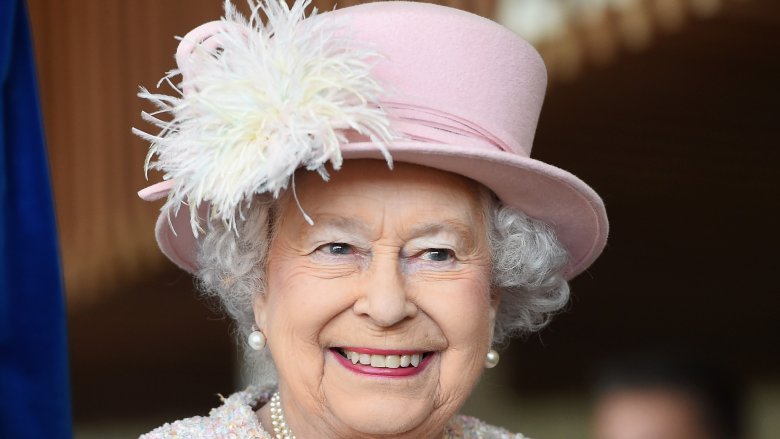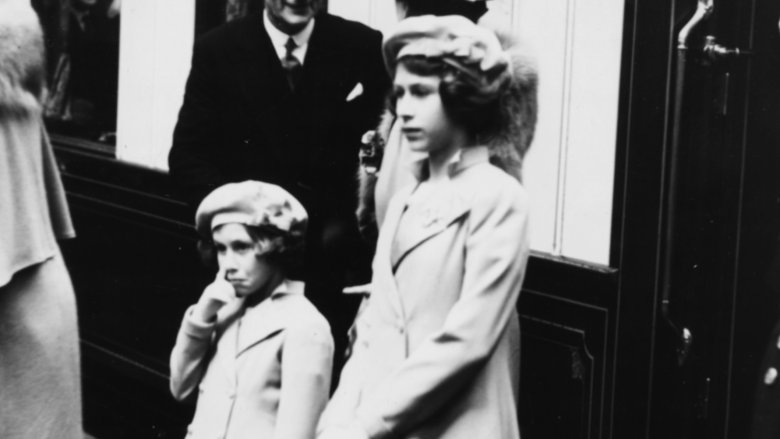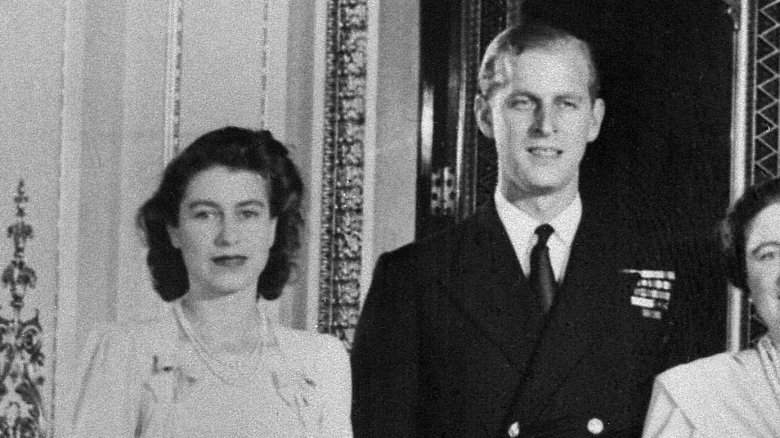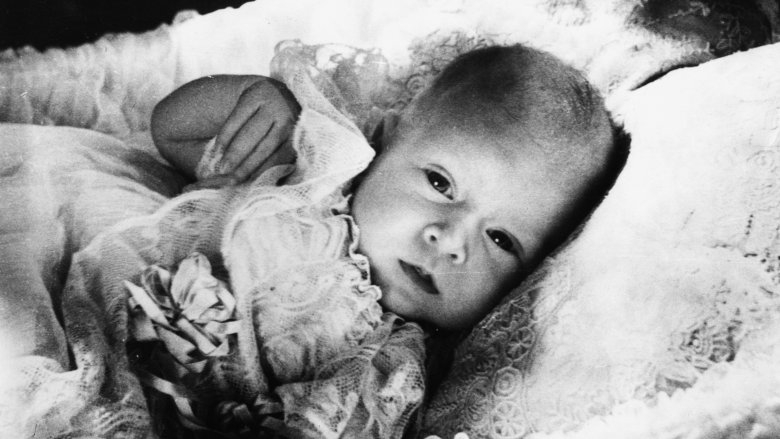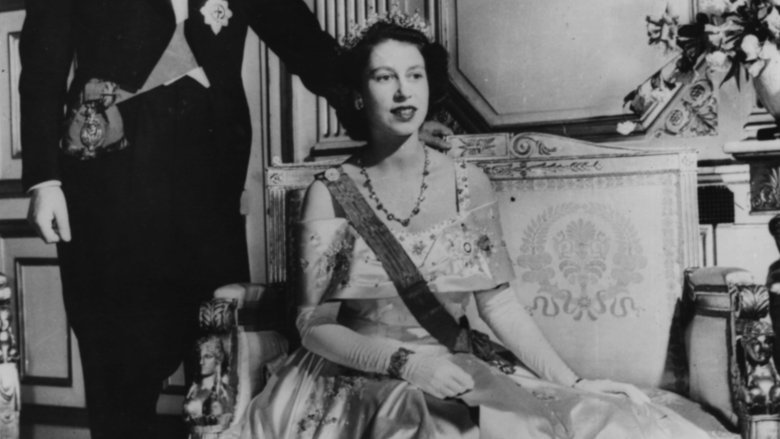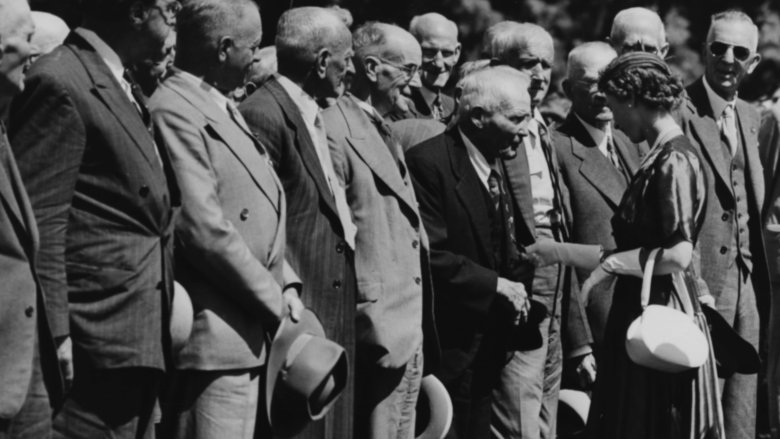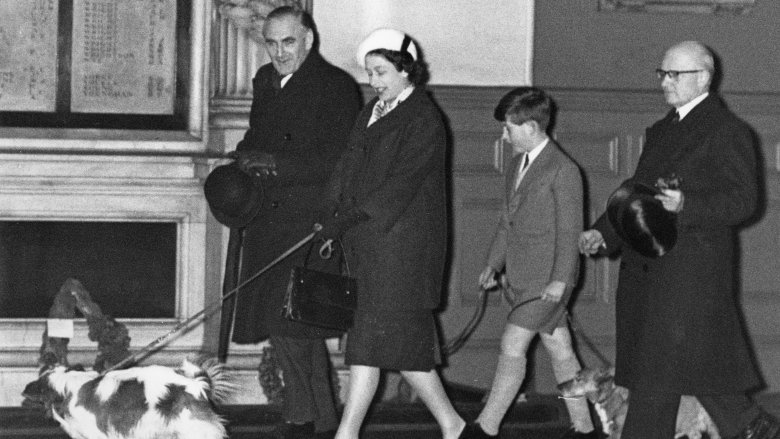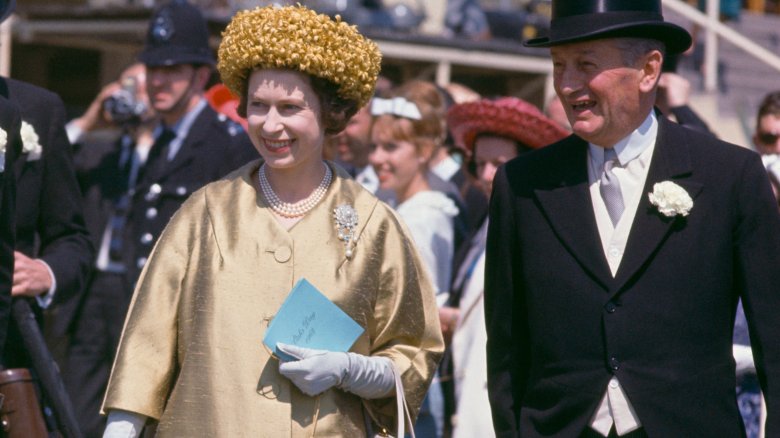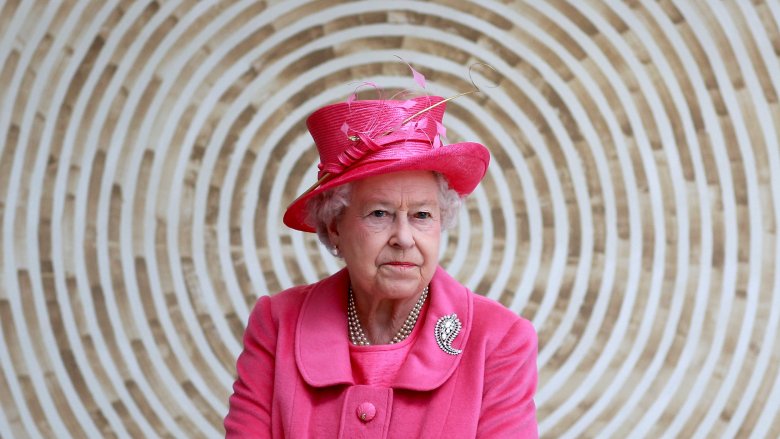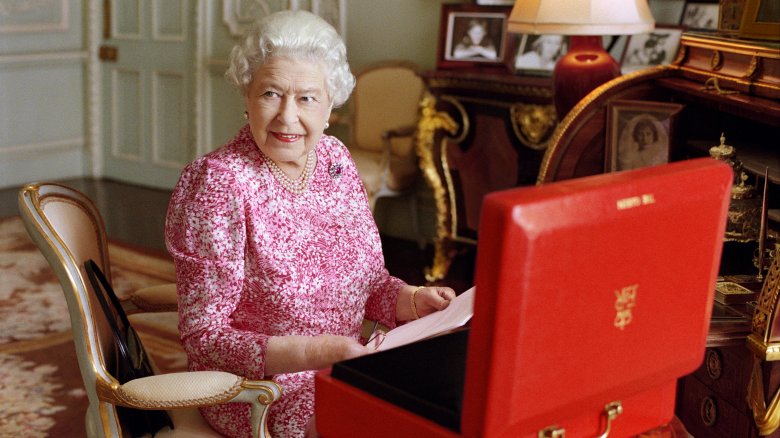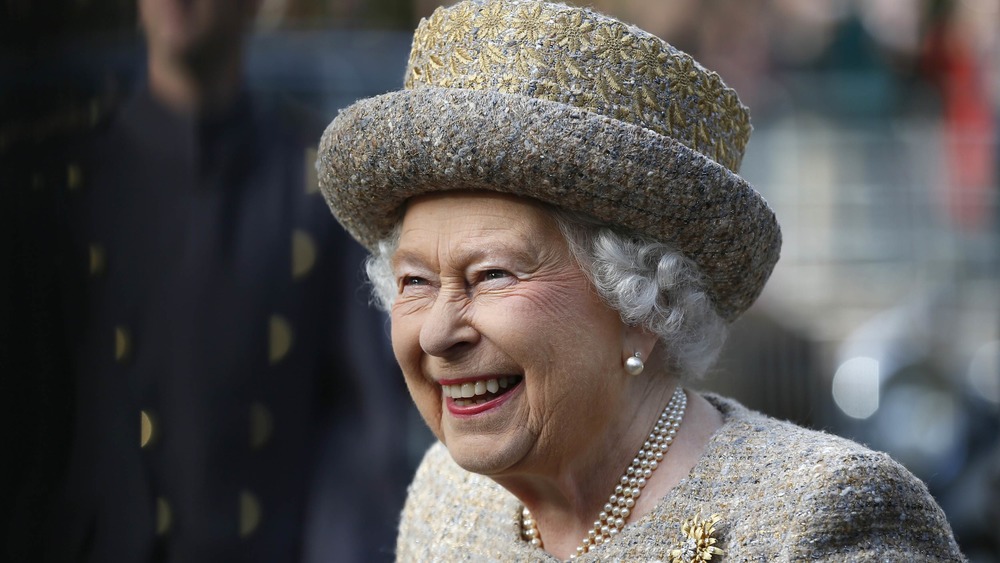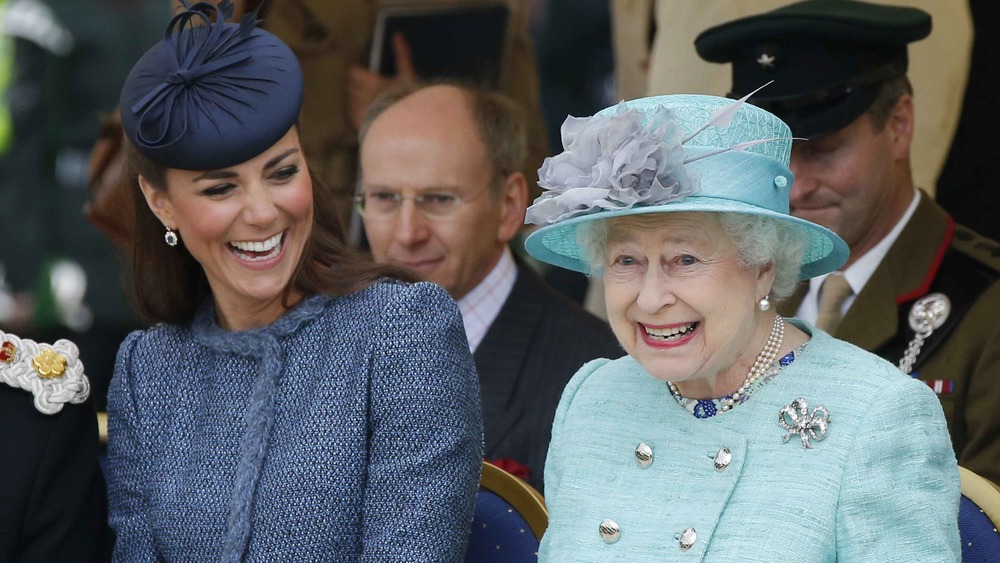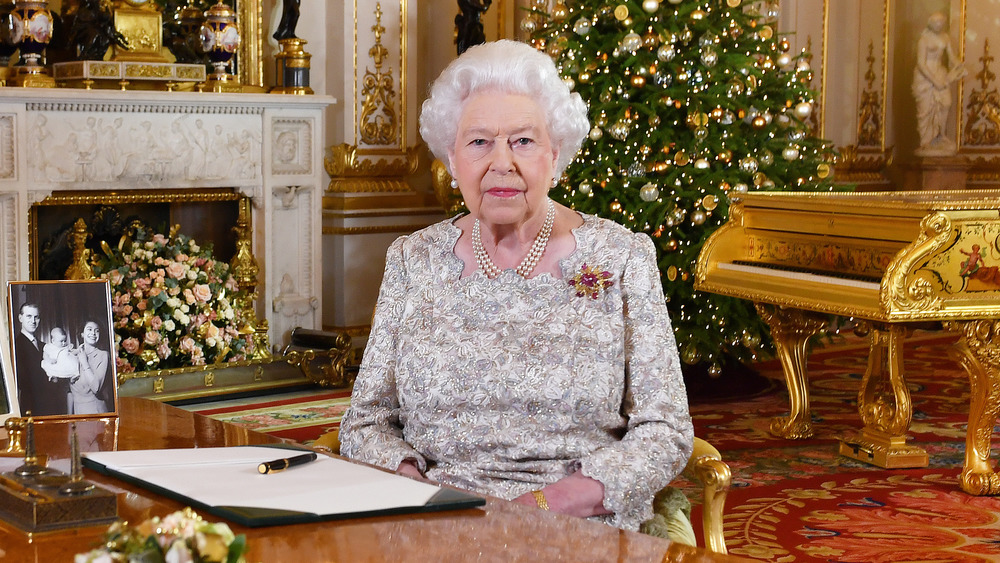The Stunning Transformation Of Queen Elizabeth
Queen Elizabeth II has been known by many titles over the years. Name changes can get a bit confusing for us non-royals, so quick shoutout to the queen for keeping her birth name after taking the throne.
She was born Elizabeth Alexandra Mary to father Prince Albert (who was later renamed King George V) and mother Lady Elizabeth Bowes-Lyon. Over the past nine decades, she has earned a real mouthful of official royal titles — not unlike Mother of Dragons, Daenerys Targaryen — including, but certainly not limited to, Head of the Commonwealth and Defender of the Faith.
Naturally, it wasn't just the queen's various names and titles that changed over time; Her Majesty herself has also transformed drastically over the years. From her physical appearance to her personal style, to even her personality, she is the queen of transformation. How exactly did she manage to seamlessly evolve before our eyes? You might just want to keep on reading.
Growing up as a princess
When the queen was born she was, of course, not yet the queen. In fact, her father wasn't even king. He began to rule in 1936 when Queen Elizabeth II was just 11 years old. Let's just say that growing up as a British princess is certainly different than being raised a Disney princess.
According to royal expert and biographer Ingrid Seward's book The Queen's Speech: An Intimate Portrait of the Queen in Her Own Words, Elizabeth II was raised mostly by her nanny Clara Knight, a "no-nonsense" woman. Knight was very strict and routine-oriented — quite the party-pooper. Thankfully for the then-princess, a younger nursery maid, Margaret MacDonald, was also hired. She shared a bedroom with Elizabeth and the two ended up becoming close friends — the queen even nicknamed her "Bobo" — until MacDonald passed away in 1993.
Queen Mary, grandmother of Elizabeth II, was very strict as well — she was of the "children should be seen and not heard" era. Whether correlated or not, the queen grew up "painfully shy."
She was "flushed and radiant with happiness" with her future husband
Back when Queen Elizabeth was a very reserved 13-year-old princess, she attended the royal wedding of Prince George and Princess Marina of Greece and Denmark. It was there that she met the cousin of the bride, an 18-year-old man by the name of Philip Mountbatten. We now know him as Prince Philip, the queen's husband.
The same year, Philip joined the Royal Navy and served during the Second World War, becoming one of the youngest first lieutenants at just 21 years old. Despite conflicting schedules, the two became engaged and, in 1947, made their first official appearance together at a Buckingham Palace event.
According to The Telegraph, Lady Mabell Airlie, lady-in-waiting to Queen Mary, said the then-princess appeared "flushed and radiant with happiness" while attending the garden party with her beau. While Philip appeared shy to partygoers, Queen Elizabeth was well on her way to becoming a formidable queen — unbeknownst to anyone at the time.
Raising children as a royal
Not long after their first public appearance together, Queen Elizabeth and Prince Philip married. Just about a month after their wedding, Elizabeth became pregnant. For months, she suffered from morning sickness — Kate Middleton can definitely relate — but that didn't hold her back from keeping up an active social life. In November 1948, the princess at the time gave birth to a son, Prince Charles. The transition from newlywed to mother wasn't necessarily an easy one.
In a letter to her cousin sent just a couple weeks after giving birth, Elizabeth wrote (via Vanity Fair), "I had no idea that one could be kept so busy in bed — there seems to be something happening all the time!" Nevertheless, the new mother was happy. She continued, "I still find it hard to believe that I really have a baby of my own!"
Just one year and nine months later, the couple welcomed another child into their home — this time a girl: Princess Anne.
From mom to monarch in a few years
Imagine having a preschooler and toddler at home, then finding out your dear father passed away — oh, and that you'll need to step up and rule the country now. That's essentially what happened when Elizabeth II became queen in 1952. When her father passed, Elizabeth was on a diplomatic tour. She and Philip were gifted a stay at a lodge in Kenya as a belated wedding present. Her husband was the one to break the news, according to Time, and he did so gently, walking with her along the rivers of Mount Kenya.
Losing your parent is tragic enough — but imagine having to immediately take his role, with no time to grieve. That must have been heartbreaking. Queen Elizabeth was caught off guard by her father's passing, even telling others the day prior that she wanted to come back to Kenya with him. "He'd love it," Time reported her as saying.
In perhaps her greatest transformation of all, she left England a princess and returned Queen Elizabeth II.
A lifetime of meet-and-greets
"In a way I didn't have an apprenticeship," Express reported the queen as saying when she took the throne. "My father died much too young and so it was all very sudden." She went on to explain how she matured and accepted that it was her "fate," adding, "It is a job for life." Ain't that the truth.
Regardless, she took her role seriously. After her coronation, Queen Elizabeth II set out on a nearly six-month tour from Bermuda to the Cocos Islands — traveling a total of 43,000 miles according to Vanity Fair. Philip came with, but the couple's two children stayed behind with the Queen Mother.
She embarked on a career of endless meet-and-greets, formal handshakes, and the exchanging of niceties. In fact, smiling at so many thousands of people actually caused her to develop "a temporary facial tic," a biography of the queen (via International Business Times) stated. And when she wasn't meeting crowds, she had, well, an RBF — it's true! Often, her facial expression made her appear cranky when she wasn't. "I don't have a naturally smiley face," she explained. You do you, Queen E, you do you.
Reigning pregnant
The queen's transformation from princess to queen meant she missed out on a lot of her children's milestones. Ultimately, she and Prince Philip decided to have more children and, in May 1959, she became pregnant. At the end of her second trimester, she took a much-needed break from her official responsibilities. On Feb. 19, 1960, she gave birth to her third child and second son. Queen Elizabeth II decided to name the child Andrew after Philip's late father. Prince Andrew was the first baby born to a reigning monarch since the days of Queen Victoria's rule.
In 1964, the queen went on to have another son, Prince Edward. His birth was significantly different than that of his siblings. According to My Husband and I: The Inside Story of 70 Years of the Royal Marriage written by royal expert and biographer Ingrid Seward, Prince Philip was present for his child's birth — for the very first time. Things were different in the '50s so we won't be too hard on him. In the end, "Philip became the first royal father in modern history to witness the arrival of one of his children." Wild, right?
The beginning of bold fashion choices
Queen Elizabeth II was, as you'd expect, a modest dresser. But just because she didn't show a lot of skin didn't mean she didn't have a sense of style. In the 1960s, the queen began experimenting with some pretty bold choices.
The book Animal Rights: Noble Cause Or Needless Effort? reported that, before fur became a faux pas, Jacqueline Kennedy started a trend of wearing a real leopard coat. The queen herself was quick to follow. She didn't stop there, though. Caroline de Guitaut, the curator at the Royal Collection Trust, explained to The New York Times that the queen started acquiring quite the hat collection, including pillbox styles that were popular in the '60s and the "turbanlike styles" of the '70s.
The hats were a way for the public to spot the queen quickly, according to de Guitaut. Although her hats had an almost political purpose, she also chose styles that were "considered very avant-garde for their day." That's right — the queen was becoming a fashionista.
Staying visible
Hats aren't the only medium the queen uses to get herself noticed. These days, you can often spot her wearing any color — ranging from burnt orange to periwinkle to even fluorescent green. "She needs to stand out for people to be able to say 'I saw the Queen'," the queen's daughter-in-law, Sophie, Countess of Wessex, said in the documentary The Queen at 90 (via Insider). "Don't forget that when she turns up somewhere, the crowds are two, three, four, 10, 15 deep," she elaborated. This means she needs to be noticed from great distances away. What better way than to use her fashion as a means to accomplish the incredible feat?
Queen Elizabeth II definitely knows how to make a statement with her look — and yet, somehow, she does this all while remaining the sweet little elderly lady — and yes, queen — we've come to know and love. Well done, Your Majesty.
The longest-reigning monarch in British history
On Sept. 9, 2015, at exactly 17:30 BST (12:30 p.m. EST) Queen Elizabeth surpassed the longest-reigning monarch in British history, Queen Victoria. This all happened after a whopping 23,226 days, 16 hours and 30 minutes, according to BBC. Basically, about 63 and a half years or, to put it even simpler, a ridiculously long time.
When you think about it, the queen has lived through the invention of the television, cordless phones, cell phones, the internet — and so many more technological advancements. She even lived through war-torn England during World War II. She has witnessed more change than many of us can even begin to imagine. Nevertheless, in her 90s, she continues to transform and transcend time while ruling over the United Kingdom and 15 other countries.
Once a young woman who was never thought to become Monarch, she's become the queen of monarchs, and will go down in history for her longstanding impact on the world.
Queen Elizabeth developed some style secrets over the years
In October 2019, several of Queen Elizabeth's biggest style secrets were revealed thanks to the release of The Other Side of the Coin: The Queen, the Dresser and the Wardrobe, which came to fans courtesy of her personal stylist and long-time confidant, Angela Kelly. Town & Country reported at the time that the queen's "former assistant private secretary" said the book "documents the unique working relationship between Her Majesty The Queen and the woman who has been her Personal Assistant and Senior Dresser for more than two decades."
Of their close friendship, the queen's dresser told The Telegraph back in 2007, "We are two typical women. We discuss clothes, make-up, jewelry. We say, 'Would this piece of jewelry look nice with that outfit?' and things like that." As Insider noted, anecdotes divulged in the book include the revelation that Her Majesty once wore a hat backwards because it suited her better. Evidently, Kelly's opinion means a great deal to her — the queen did consult her husband before committing to the wild look however, with Kelly noting he "didn't hold back."
Throughout her time on the throne, there's one item Queen Elizabeth is never seen without
Queen Elizabeth has her own signature style, that much is clear. Over the years, it's evolved as she has, but certain elements remain sacrosanct. As Leslie Field, author of The Queen's Jewels, advised People in 2020, there isn't a single occasion that the queen deems unworthy of donning her signature necklace. "Pearls are traditional for Queens going back one thousand years — there has never been a Queen who didn't wear pearls," she explained. Her Majesty boasts an impressive collection of pearls, having built it up over the years alongside her iconic handbags, making it easier to choose the right set for any given day.
Regardless, she will not be seen without them no matter what. As Field noted, "She wants to wear pearls every day as her mother and grandmother did before her." Field advised the tradition began with her great-great-grandmother, Queen Victoria, who gifted her daughters and granddaughters a single pearl annually on their birthdays, so when they reached 18, they'd have a whole necklace worth. The queen's father, King George VI, continued the tradition by gifting her a platinum chain to which he added two pearls each year.
Just like everyone else, Queen Elizabeth has a sense of humor
Much of Queen Elizabeth's life is bound by royal protocol, but she's not a robot. As royal biographer Sally Bedell Smith, author of Elizabeth the Queen: The Life of a Modern Monarch, revealed to People, she "is much livelier in private than what the public sees." An insider noted the queen's boisterous laugh is so loud it reverberates around her expansive country estate. She's also known for making jokes at her own expense, quipping about her "Miss Piggy face" at Prince Charles' wedding to Princess Diana.
Likewise, Sophia Bennett, author of royal-based detective novel The Windsor Knot, whose father worked in close proximity to the queen for many years, revealed to Yahoo!, "If staff see her they might give her a brief nod or curtsy but she does not expect them to drop everything they were doing." Naturally, the queen is also allowed to bend the rules whenever she pleases. Bennett advised, "She is not nearly as formalistic as people might imagine." The queen might seem stern on the outside, but underneath all the pomp and circumstance, she's just like everybody else. Except she lives in a palace, of course.
